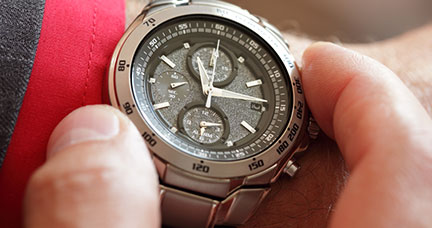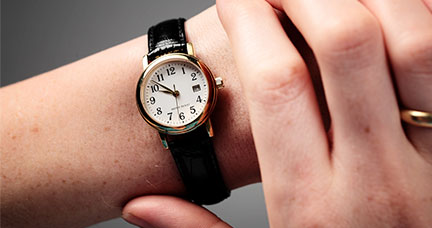As a qualified first on the table fan obsession with the pursuit of a wristwatch, and after suffering a loss last night to start, then the next step is to cherish this time in turn produces one after another, we in the end how to properly maintenance of our favorite watch it?

General Cleaning
Keeping your watch clean on the outside lessens the chance of it getting dirty on the inside. Wipe off your watch periodically to remove dust, dirt, moisture and perspiration.
Cleaning a NON water-resistant watch:
1.Avoid exposure to any moisture.
2.Simply wipe the watch with a dry soft cloth.
Cleaning a water-resistant watch:
1. Use a soft damp cloth to clean the head of the watch and then wipe off with a dry soft cloth.
2.Metal bracelets can be cleaned by using mild soapy water and a soft toothbrush.
MAINTENANCE SCHEDULE
In addition to an annual 5 Point Check-Up, a complete movement overhaul is recommended every three to five years to keep your watch in pristine condition.
For A Manual Watch:
1.Wind your watch fully at the same time each day.
2. Be careful not to force the crown. When it stops, or you feel resistance, stop winding. Forcing the crown can damage the setting mechanism.
For An Automatic Watch:
For optimal performance, the automatic watch is to be worn every day and ‘be active.’
1. To power up an automatic timepiece, give the crown about 20 to 40 turns and put the watch on your wrist.
2. If the watch has a screw-down crown, be sure to secure it after the watch has been wound and set to ensure the water- tight integrity of the watch.
3.If the automatic watch is worn daily, wind it once every two weeks. Wind the watch twice a week if it is not worn daily.
For Setting The Date:
1. Avoid setting the date between 9 pm and 3 am as doing so can damage the movement’s gears and pinions.
2. Be sure to adjust the date outside of this time period.
Batteries
The average life of a quartz watch battery is 1 to 3 years. The life of the battery is dependent on a number of factors: age, condition of the movement, and the type of watch—analog/chronograph or digital. The more functions a watch has, the more frequent the need for battery replacements. When a battery can no longer power the watch, change it promptly. Otherwise, you run the risk of the battery leaking and causing damage to the mechanism.
WATER RESISTANCE
Not all watches are designed to be water resistant, and there are various degrees of water resistance. It is important to remember that water resistance is not a permanent condition, and it must be tested and renewed periodically. Gaskets and seals used to seal the watch deteriorate over time and will need to be replaced.

